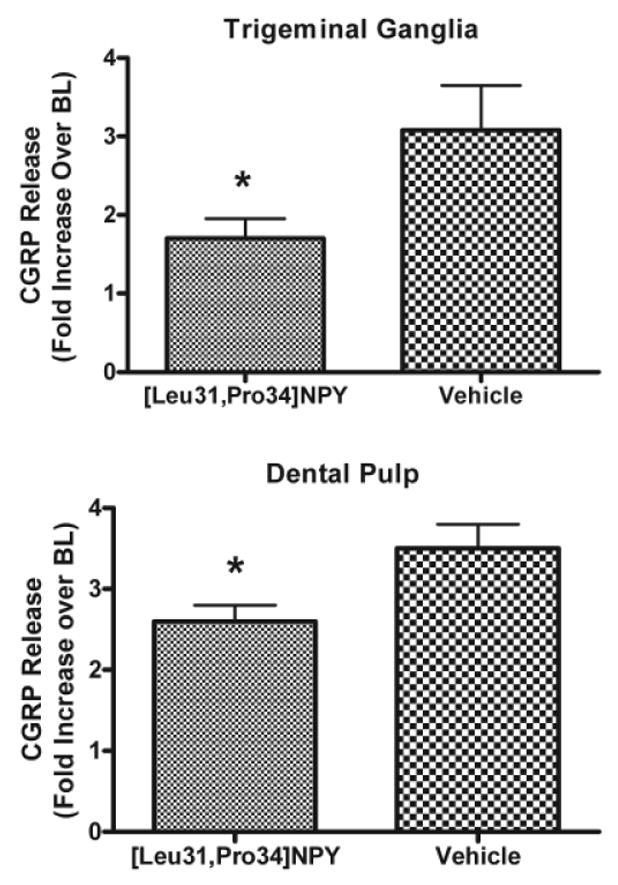Figure 2.

Effect of [Leu31,Pro34]NPY on peak capsaicin-stimulated CGRP release from trigeminal ganglia and dental pulp. Data are presented as fold-increase over baseline (BL), where baseline represents the average CGRP release prior to drug treatment (3 fractions in trigeminal ganglia and 5 fractions in dental pulp; BL = 53.1 ± 4.0 fmol/mL for trigeminal ganglia and 4.6 ± 0.3 fmol/mL for dental pulp). Statistical analysis by an unpaired two-tailed t test demonstrated that tissues pre-treated with [Leu31,Pro34]NPY (30 nM) released significantly less CGRP when stimulated with capsaicin (30 μM in trigeminal ganglia and dental pulp) (p < 0.05 for trigeminal ganglia and dental pulp). Error bars = SEM. N = 13 for trigeminal ganglia; n = 18 for dental pulp.
